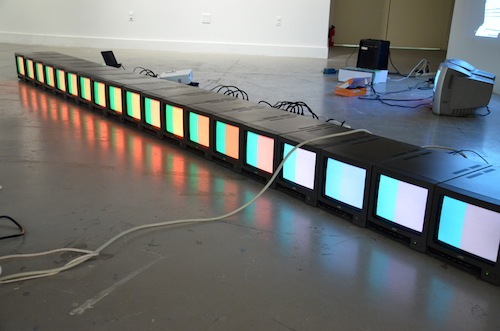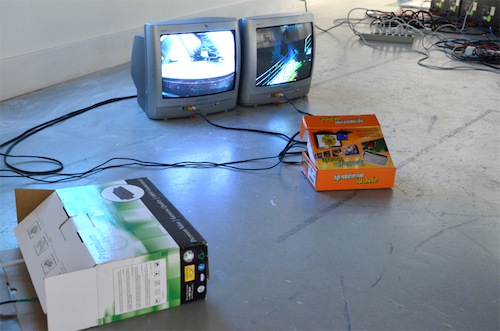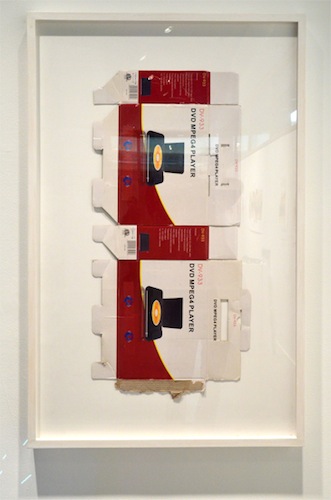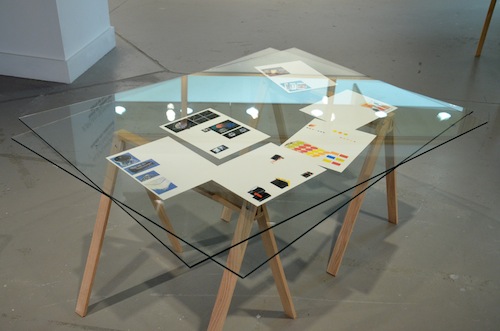While Jordan Bernier’s MFA thesis show, titled Ways of Seeing the Birth of Tragedy, touches on many contemporary issues, it mainly functions as a clever critique of consumer culture, with a keen eye on the transitory nature of technology. An initial reaction to the exhibit is one of surprise – prior to grad school, Bernier’s work fit nicely in a commercial gallery setting and, with this new body of work, he has stepped way outside of the white cube.
Upon entering the MFA Gallery at Towson University, the viewer is confronted with a mass of technological information from low-tech perspectives. There are wall projections, groupings of TV monitors on the floor, a mini amplifier playing a Walkman, old laptops sitting on the floor, and blank newsprint covered with glass, also on the floor. There are many many parts to Bernier’s installation, Untitled 2012-2013, and that is the fun of it.
The equipment Bernier uses plays into a snide commentary on technology. He chooses to use low technology — dated monitors, dated dvd players, dated laptops, a Walkman playing a cassette. Nothing in this show is high tech or high definition. Bernier intentionally uses “old” equipment, which is approximately 5-ish years old. It’s amazing to think that five years ago this equipment cost from hundreds to thousand of dollars. Today it’s all obsolete, like someone else’s trash, equipment you can find in a thrift store or on the side of the road with a ‘free, take me,’ sign taped to it if you are lucky. It raises questions about sustainability and the future: What will happen to the flat screen TV? What will happen to HD video 5 years from now? Will it too be trash? What is next?
Another part of Bernier’s installation that caught my attention right away is a digital painting projected on the wall, an homage to MC Escher. The video shows Bernier recording himself (it could be anyone for that matter) painting in black on a piece of newsprint. The painting seems to be less about the image and more about the action of painting and Bernier projects this video directly onto the wall. Just as the painting is finished, you see it begin to get erased.
This piece starts a conversation about how temporary a thesis show is, and acknowledges how impermanent all of the work is. When the show comes out of the gallery what is left but a few DVDs and CDs? It’s an interesting metaphor for the role of the artist in society, full of humor and scrappy irony, and always questioning.
Author Julie Benoit is an artist and professor at Towson University.
Event Runs Fri., Feb. 8 – Sat., Mar. 16 at Towson University’s Center for the Arts











